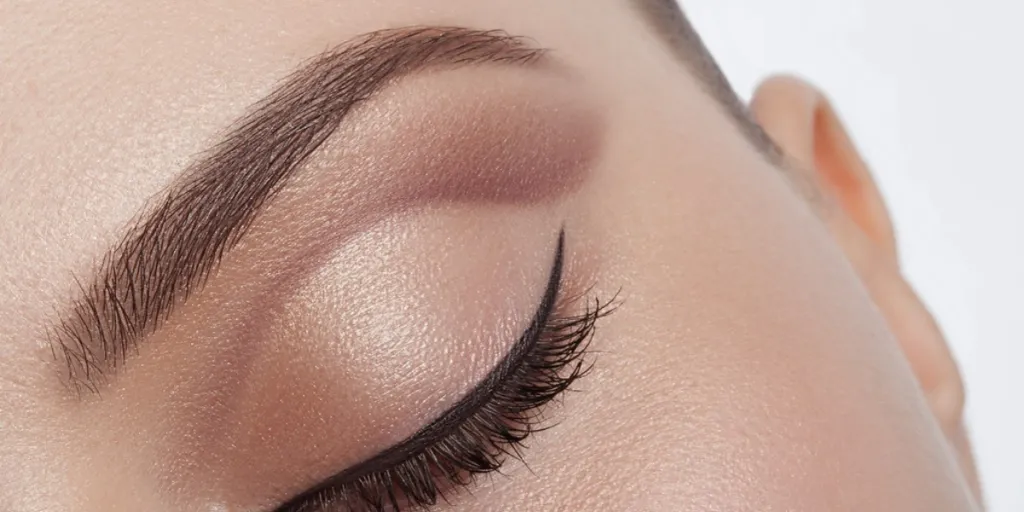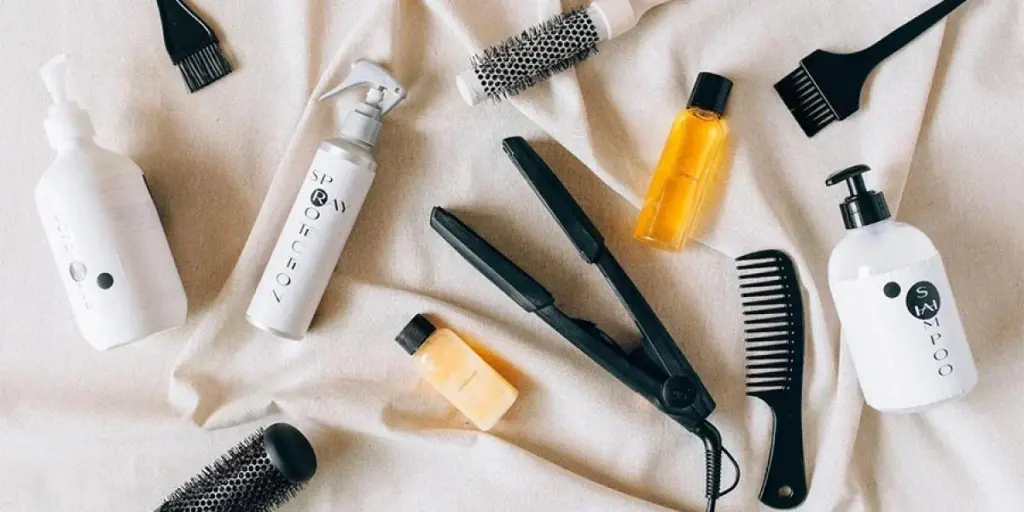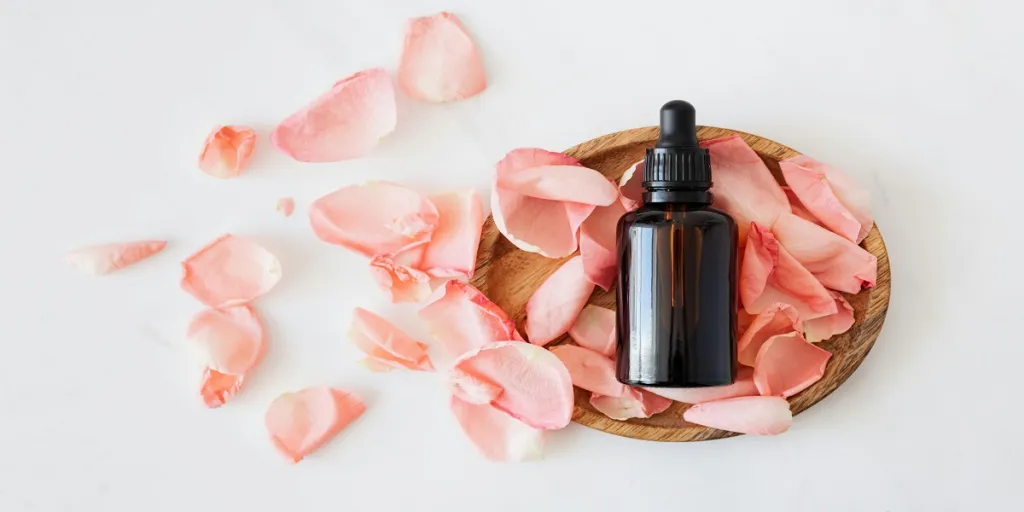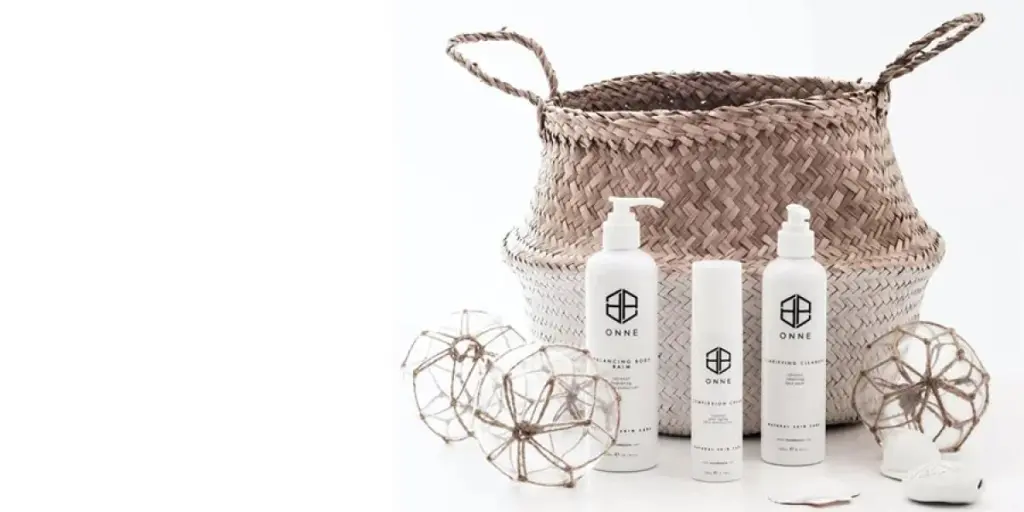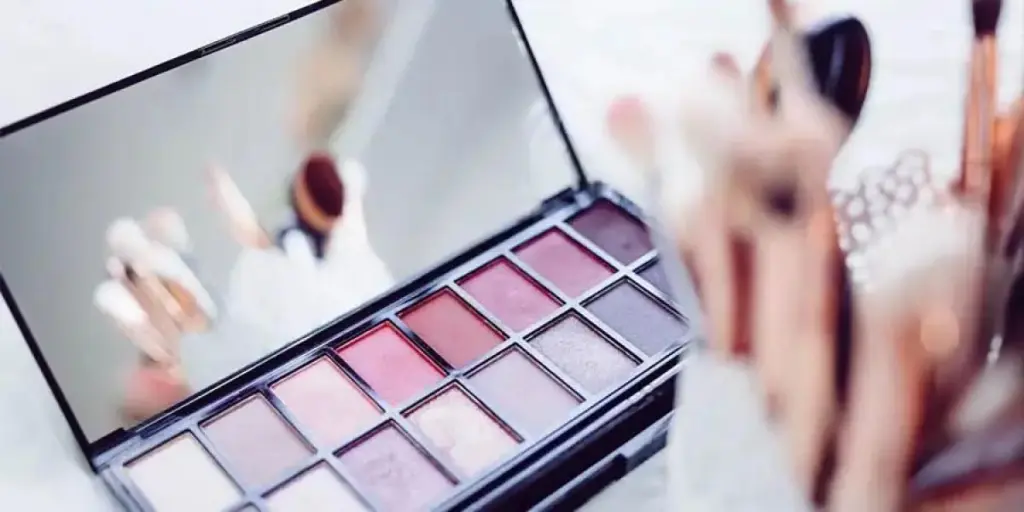Eyebrows can take a lot of time to fill, making the whole process stressful and challenging for more female consumers. The dislike for such routines even extends to using brow pencils, gel, pomades, and soap combos daily for the perfect brow.
While some women certainly don’t mind the brow beauty routine, others who can’t handle the stress turn to semi-permanent solutions like microblading. And it’s a very popular procedure, too, raking in 673,000 searches monthly.
This article shows sellers five must-have microblading tools to maximize profits from this market. But first, here’s the basics of microblading and why it’s so popular.
Table of Contents
Understanding the basics of microblading
What will the market be like in 2024?
5 necessary tools estheticians need in a microblading kit
Leverage these tools
Understanding the basics of microblading

Microblading is basically cosmetic tattooing. However, it’s quite different from traditional tattoos because the esthetician uses a blade-shaped tool with rows of microneedles instead of a tattoo gun. This tool creates hair-like strokes along the brows while adding pigment to the skin.
The results are a realistic-looking brow that won’t wash off for a long time (typically a year or more). Since they only last for a long time, microblading tattoos are only semi-permanent, with an easy and almost painless healing process.
However, not every female consumer is a great candidate for microblading. So, sellers must understand their target market, as skin type helps determine if a client is suitable for this cosmetic procedure or not.
For instance, if they have keratosis pilaris on their forehead or frequently deal with cystic acne or breakouts around the brow area, then such consumers can’t enjoy microblading.
Note: Other conditions like sensitive skin, allergy-prone consumers, and pregnant or breastfeeding clients may also fall short of being eligible for microblading procedures.
What will the market be like in 2024?
Experts predict the global microblading market will reach US $4.2 billion by 2025, moving from US $2.4 billion in 2019 at a 10.8% compound annual growth rate (CAGR). The market’s growth drivers include the rising awareness of microblading benefits and the increasing popularity of cosmetic procedures among young women.
Although the microblading market is in its early development stages, the procedure has enjoyed a popularity boost as more women seek easy ways to achieve the perfect brows. The market is also highly fragmented, with many small-scale players dominating the market (the top 10 players account for less than 30% of the overall market).
Research also suggests Asia-Pacific will register the fastest CAGR over the forecast period. Experts expect the North American microblading market to grow at an impressive rate during the forecast period.
5 necessary tools estheticians need in a microblading kit
1. Microblading pigment
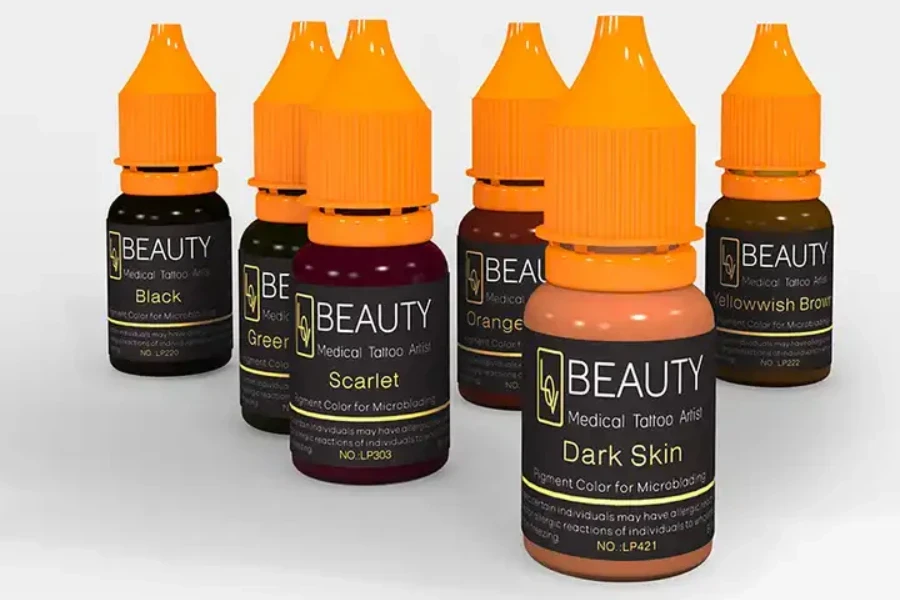
While traditional tattoos use concentrated inks, microblading rolls with smaller pigment particles create a soft, subtle, semi-permanent look. Microblading pigments can generally be categorized as either organic or inorganic.
Organic microblading pigments are usually fruit- or vegetable-based, with many giving them the nickname “lake pigments.” They offer rich brow colors and brighter effects that eliminate a dull, faded look. Organic pigments are also oil-dispersible, meaning the colors blend more naturally with the client’s skin and have little to no clumping.
On the other hand, inorganic pigments consist of iron oxide, preservatives, perfumes, and other additives. While it’s more affordable than organic ink, it has a higher risk of causing reactions or permanent damage.
Inorganic pigments are lighter than organic ones, offering less intense colors. While they provide a non-transparent solid color, it can change over time due to the high iron content (some consumers may end up with “pink brows”).
2. Microblading blades
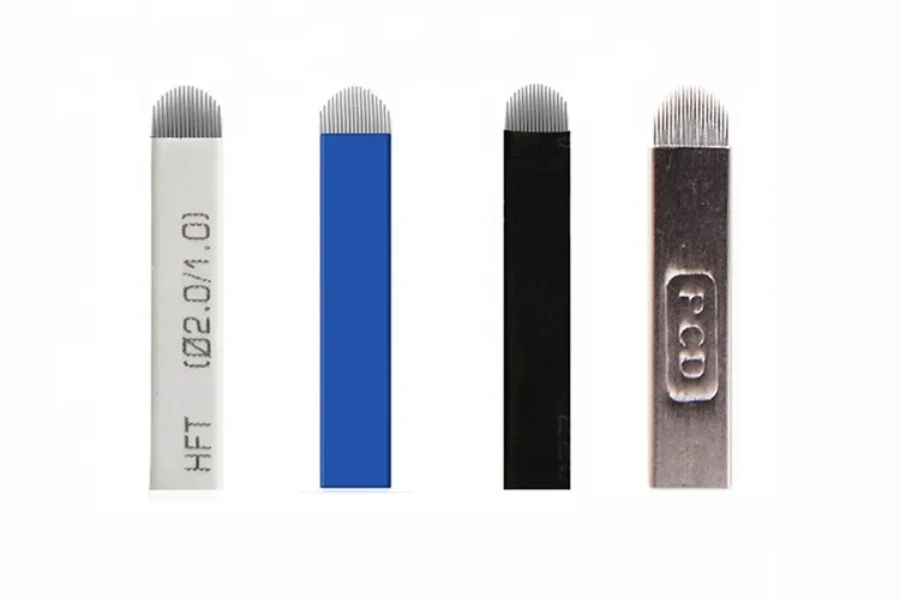
Many people love microblading because it’s customizable. Microblading blades are one of the tools that bring this customizability to reality. Since everyone has unique skin thickness and features, it makes sense that different blades exist for various clients.
But first, what are microblading blades? They’re one of the primary tools, consisting of small, sharp needles that make the frame and form of a blade. Depending on the type of microblade, the needles can come in different shapes, one or more rows, or with narrow or wide spacings.
Check out the table below for the two types of microblades:
| Flexi blades | Hard blades |
| These blades feature 7–21 needles combined with plastic to give them flexibility. Flexi blades are great for beginners, but professionals can also use them effectively. These blades can go too deep into the skin. Microblading artists can use flexi blades for any skin type. However, they’re more suitable for thin, sensitive skin. | Hard blades also consist of 7–21 needles with a stainless steel base instead of plastic. These blades are the recommended ones for pro microblading artists. Hard blades offer more defined hair strokes than their flexible counterparts. They also go deeper into the skin with less pressure. Hard blades are only suitable for regular, thick, and hard skin. |
Microneedling blades can also be divided into shapes:
| Blade shape | Description |
| Angled or slanted blades (S-blades) | The perfect shape for beginners because of its easy depth control. |
| Curved blades (C-blades) | They’re ideal for creating curved strokes and achieving the most natural results. |
| U-blades | These blades come in a U shape with 12 to 21 needles. They’re also recommended for more advanced artists. |
3. Pigment mixer machine
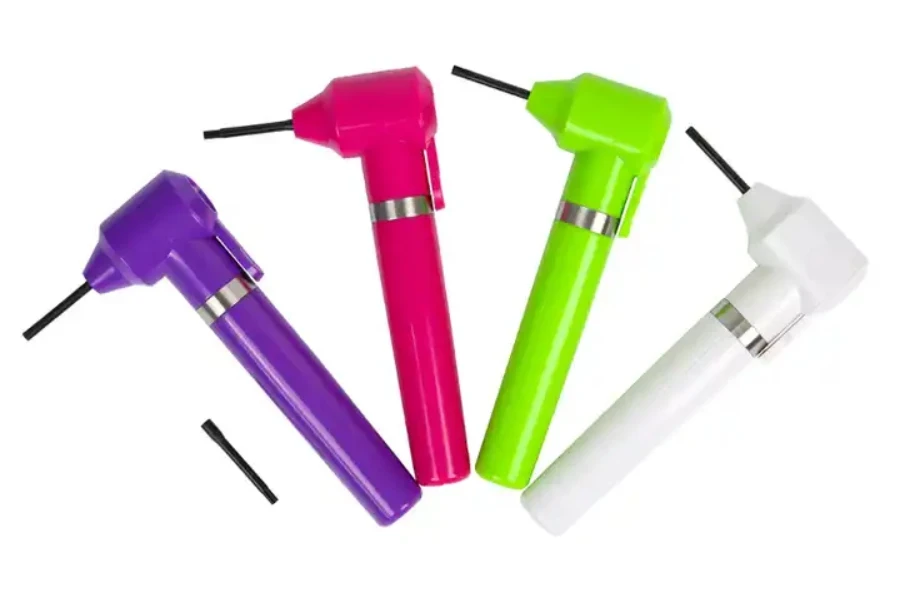
While regular pigments (like black) work for most situations, some clients may want custom shades for their brows. That’s where pigment mixer machines come in. They’re the perfect tool to help estheticians mix various pigments to get their clients’ desired color.
The best part is that pigment mixer machines are easy to use, meaning consumers can easily create a wide range of custom colors without any hassle. These tools ensure estheticians get a nicely blended, homogenous pigment mix whenever they need to make a custom shade.
4. Mapping tools
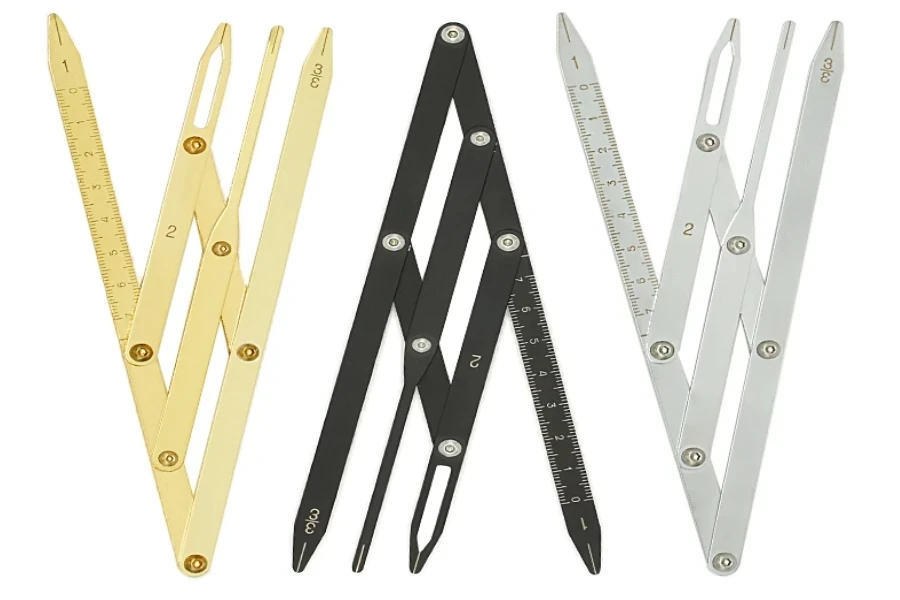
Microblading needs some craftsmanship to make the perfect look, making mapping a crucial part of the process. And consumers will need the perfect tool to help them map the ideal brow shape for their clients.
Thankfully, businesses can offer various tools for mapping. However, some may be more complex, so keep the target consumer in mind before stocking up.
While calipers are perfect for beginners and novice microblading artists, compasses will do more heavy lifting once they master the tool.
5. Marking tools
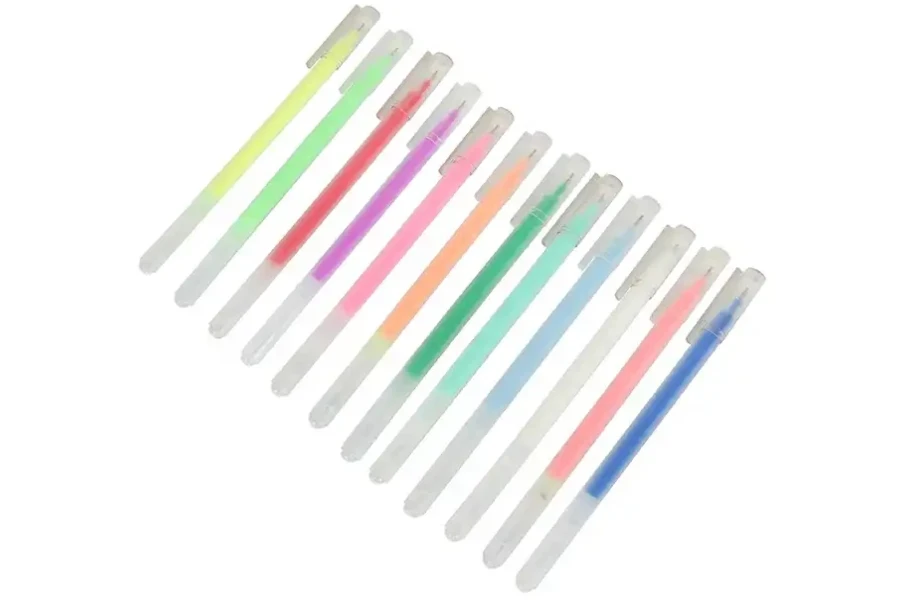
Mapping tools may help get the shape, but it’ll mean nothing if artists can mark them. That’s why they’ll need marking tools to help draw the ideal brow shape before the procedure.
Marking tools are an absolute must-have because they visualize the shape of the client’s future brows. Some artists prefer using pencils as their marking tool, while others opt for markers—none is more effective than the other, so it depends more on preference.
However, ensure the marking tool has enough precision and leaves long-lasting marks without smudges.
Leverage these tools
Microblading is a great way to enjoy a semi-permanent brow job for years without needing pesky beauty routines. However, microblading is not a DIY process. Hence, businesses must avoid labeling their offers for at-home use.
The target audience should be licensed professionals with the necessary certificates to carry out these procedures. Estheticians must have the right equipment before starting a microblading business, and sellers can profit from that need.
Invest in microblading pigments, microblading blades, pigment mixer machines, mapping tools, and marking tools to leverage this cosmetic tattoo market in 2024.
